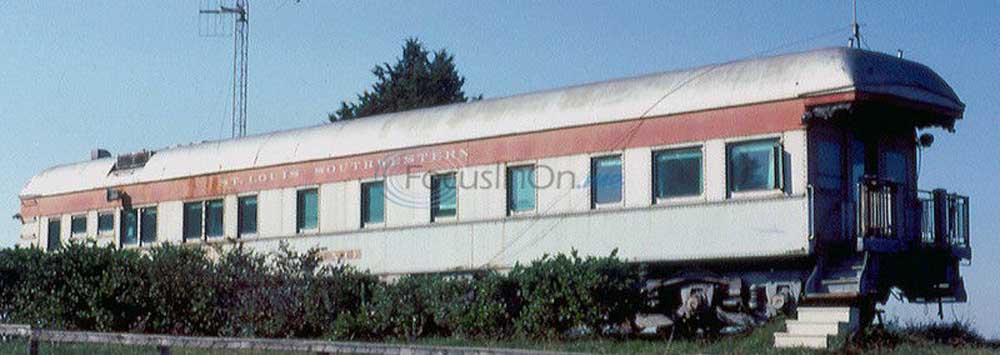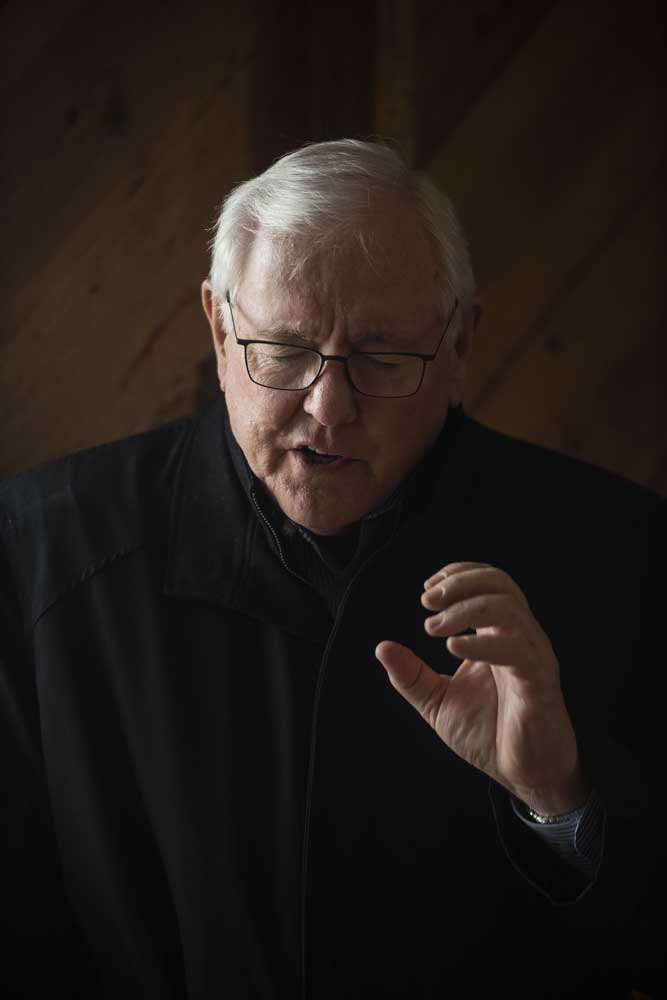Tyler’s Cotton Belt Rail Historical Society trying to bring home rare car
Published 11:01 pm Saturday, August 16, 2014

- Courtesy Pictured is the James P. Douglas in 1980. The car was donated to the Cotton Belt Rail Historical Society for display in Tyler its original home. The historical society would like to bring the James P. Douglas back to the way it looked in 1980 and display it somewhere near the Cotton Belt Depot Museum, if it can find a good place.
When Gail Hudson White looks back on her life, she recalls various train-travel experiences.
One of those experiences was traveling on the James P. Douglas car, formerly the Dixie, in 1959 or 1960. At the time, her father served as vice president and general manager of the Cotton Belt Railroad, and her parents took her and her husband, John, from Tyler to St. Louis.
“It was just great. My experience with the railroad was good. We did passenger travel and eating in the diner,” she said.
“It was just very special for an officer with the railroad to have his own business car to conduct business on.”
The James P. Douglas could make its way back to East Texas if the Cotton Belt Rail Historical Society, Tyler Tap Chapter is able to find a good location.
Cotton Belt Depot Museum Director D. Glenn Wilkins said two individuals donated the car to the historical society in November 2013.
When the two individuals initially bought it, they attempted to restore it and get it to a certain stage of renovation, but then withdrew from the effort, he said.
The car now sits in Union Pacific’s East Yard in San Antonio and is in bad shape inside and outside, he said. However, the historical society hopes to get it to Tyler, refurbish it and place it somewhere near the depot museum.
Historical Society President Paul T. Royal said the goal is to establish a railroad park by the depot museum so children could have a place to go for birthday parties and things of that nature.
He said the depot museum receives requests to have birthday parties, but it’s not allowed because there isn’t enough room, and no food or drink is allowed inside.
The proposed railroad park would include the James P. Douglas, as well as a rail post office car and a caboose. The rail post office car, which is in Flint, and the caboose, which is being stored in Pine Bluff, Arkansas, also were donated to the historical society.
Although the historical society would like to put all three cars near the depot, there is no available site, Royal said. However, he said he hopes a solution can be worked out in the future.
Royal said informal negotiations are in the works with the city of Tyler for some of the city-owned property on East Oakwood Street, across the street from the depot museum, but nothing is firm at this time.
He said the historical society is not asking the city to give property to the organization — it just wants to be able to use it.
“It would be a big asset to the city. They wouldn’t lose control of it. They would always have it, and if our organization ever went away … the city would have that and it would belong to them,” Royal said.
He said that as time goes on, the history of the Cotton Belt Railroad is getting dimmer, so the historical society hopes to preserve that.
He said the James P. Douglas car was built in 1905 for the Pennsylvania Railroad to be used as dining car.
Since it was a dining car, there was a kitchen in it, he said, and when it became property of the Cotton Belt Railroad, it ran as a lounge car for a period of time. It was later made into a business car.
Royal said railroad officials used business cars to get from one place to another throughout the whole railroad system.
“They had a dining room where they could have luncheons and conferences, had a conference room and had a bedroom for people to sleep,” he said.
That way, he said, when they got where they were going, they wouldn’t have to go to a hotel.
“So it made a lot of sense, and it also allowed the railroad officials to sit in the rear of the car and look out and look at the railroad and make sure things were the way they’re supposed to be,” he said.
Royal said the business cars also were used to wine and dine the shippers, and Wilkins said the cars maintained a wait staff, which prepared the food, served meals and kept things clean.
Royal said the depot museum has pictures of important people who used business cars. For instance, hanging in the depot museum is a picture of Will Rogers on the back of a business car. It is unknown whether that car is the James P. Douglas.
Mrs. White said she is pleased about the possibility of the James P. Douglas returning.
“I’m very excited about it, especially if they can restore it. It was probably changed after daddy used it, but especially if they can restore it,” she said. “It was just a neat thing for the railroad to have and for officials to use.”
As far as the rail post office car, Royal said before there were highway systems, mail was moved by train, and each city would take mailbags, deposit mail and the train rather than stopping would grab the mail. Then he said the men riding on the rail car would sort the mail.
He said the rail post office car in Flint doesn’t have wheels, and the goal is to eventually clean out the car, get air conditioning in it and have it on the ground near the depot as a party room.
While the historical society is trying to find a good place for the cars, the depot museum is also trying to get the city to let it restore two buildings that are on the city-owned property across from the museum, with the goal of turning the buildings into a bigger and better museum, said Shane Murphy, member of the Cotton Belt Depot Museum and Historic Tyler Inc.
He said Historic Tyler has given a $10,000 grant to restore the facades on the buildings, but that grant wouldn’t be used until the museum receives the city’s blessing to use the buildings.
If the city does give approval, the depot museum would like to turn the current museum into a children’s area with a lot of model trains, and then use the buildings across the street for artifacts, old pictures and other memorabilia, Murphy said.
So he said there would be two separate museums — one for children and another for train enthusiasts.
Wilkins noted that the depot museum is a draw for the city in that it attracts about 6,000 visitors a year from all over the world.
“We like to think that we are the best kept secret in Tyler and the best value in Tyler,” Royal said.
There is no charge to visit the depot museum, which is supported by donations from visitors and historical society membership dues.







